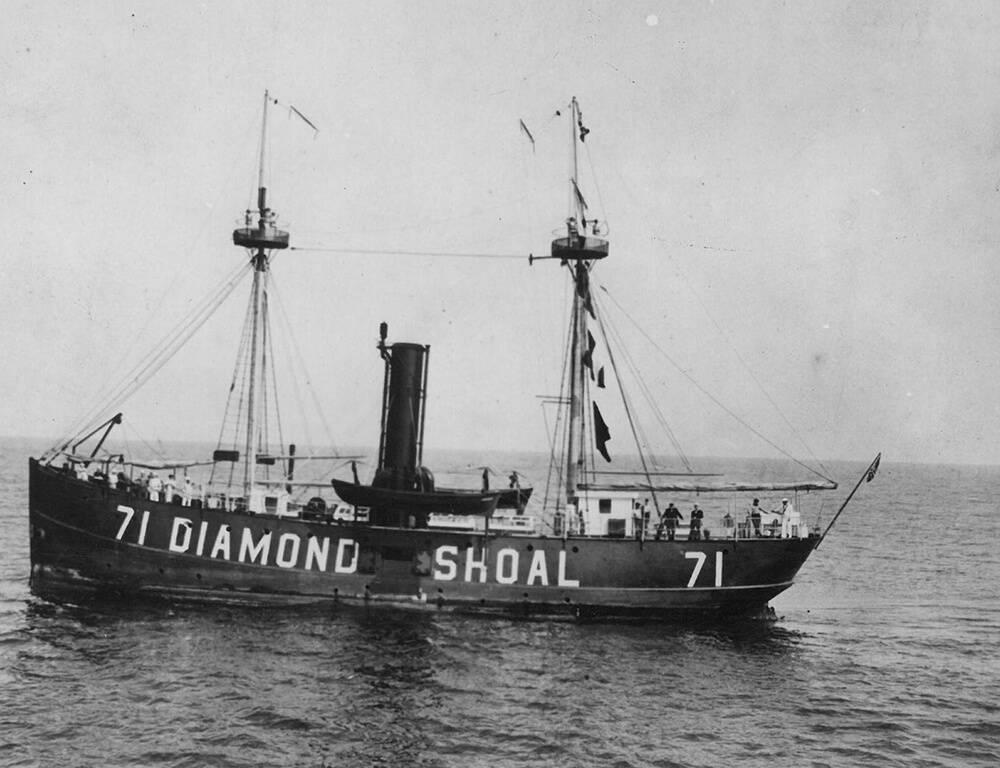World War I: Diamond Shoals Lightship LV-71

Light Vessel 71 (LV-71), also known as the Diamond Shoals Lightship, launched from Bath Iron Works of Bath, Maine, on December 28, 1897. The steam powered ship was built for the U.S. Lighthouse Board (predecessor to the U.S. Lighthouse Service and U.S. Coast Guard) to serve as a floating lighthouse, sound signal station, and navigational beacon. For over 20 years, the light vessel marked the treacherous waters of Diamond Shoals off North Carolina to ensure other vessels could navigate safely. But on August 6, 1918, a German U-boat, U-140, attacked and sank the lightship. Fortunately, all of LV-71’s crew made it safely to shore.
Today, LV-71 is located in 200 feet of water. As a U.S. Lighthouse Service vessel, it is still owned by the U.S. Coast Guard. Under an agreement reached in 2014 between the Coast Guard and NOAA, Monitor National Marine Sanctuary agreed to conduct fieldwork to document the wreck's physical remains, nominate the site to the National Register of Historic Places, and partner with the local community and the Coast Guard to share LV-71's story for the 100th anniversary of its sinking and beyond.
In 2015, NOAA and the Bureau of Ocean Energy Management, along with the Coast Guard, East Carolina University, and UNC Coastal Studies Institute, surveyed Diamond Shoals Lightship LV-71. Maritime archaeologists conducted and completed an archaeological assessment of the wreck site, and the data collected were used to nominate the site to the National Register of Historic Places.
LV-71 is just one of approximately 11 vessels sunk off North Carolina’s coast during World War I in 1918. Each shipwreck tells an amazing story that connects North Carolina to global events and highlights the heroism and sacrifice of the men who served on them. Through the research efforts of NOAA and partners, these stories are not forgotten.

